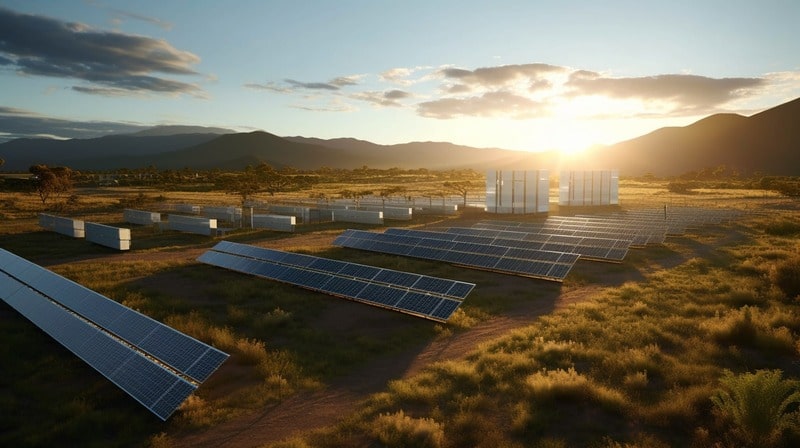Australia is witnessing a significant shift in its power system, with electricity storage increasingly becoming a game-changer. Jason Froud, a seasoned executive at Synergy, a state-owned power provider in Western Australia, highlights the transformation in how electricity is generated and utilised.
Traditionally, electricity was produced and consumed simultaneously, but the advent of storage technologies is revolutionising this dynamic, turning electricity into a commodity that can be stored and used as needed.
A New Dawn for Energy Storage
Earlier this year, Synergy activated a large-scale battery south of Perth, marking the first in a series of similar initiatives. This battery can deliver up to 100 megawatts of power for two hours, addressing the urgent need for storage as Australia’s main grid navigates through the transition from fossil fuels to renewable energy sources.
The spring season exemplifies the challenges and opportunities of this transition, with record-breaking renewable energy generation, primarily from rooftop solar panels, meeting low power demand.
Rooftop Solar: A Driving Force
The rapid adoption of rooftop solar across Australia is setting new records in renewable energy generation, with over three million households now equipped with solar panels. This widespread use of solar energy is reshaping the electricity landscape, reducing the demand for power from the grid and presenting challenges for grid stability.
However, batteries and other storage solutions are emerging as invaluable assets for providing backup power and ensuring a steady and reliable electricity supply.
Strategic Importance of Storage
Dr. Alex Wonhas of the Energy Corporation of New South Wales emphasises the strategic importance of storage in absorbing excess solar energy during peak hours and releasing it during periods of high demand in the early evening. As Australia moves towards a decentralised power system, there is a growing need for batteries of various sizes.
Western Power has responded by installing community batteries in Perth to store surplus solar energy for later use, a move that also helps reduce infrastructure upgrade costs associated with peak demand.
The Swiss Army Knife of Energy
Andrew Blaver, head of changing energy solutions at Western Power, underscores the crucial role of battery storage in managing the increasing amounts of rooftop solar exports. He describes battery storage as a “Swiss army knife” for the network, essential for preventing the waste of abundant and inexpensive renewable energy.
Storage solutions at all levels of the energy system are in greater demand to accommodate the cheap renewable energy flowing into the network.
Household-Level Solutions
Plico, a company operating a virtual power plant across approximately 1,500 homes in Western Australia’s main electricity grid, is also contributing to the solution. Households lease solar panels and batteries from Plico, which helps stabilise the grid during stressful periods.
George Martin, Plico’s chief technology officer, explains that this approach allows individual home systems to work together, providing valuable services to the grid and creating a synergy where the whole is greater than the sum of its parts.
FAQs
Why is electricity storage important in Australia’s energy transition? Electricity storage is crucial for managing the variable supply from renewable sources, providing backup power, and ensuring grid stability.
- How does battery storage support the use of rooftop solar panels? Battery storage allows excess energy generated by rooftop solar panels to be stored and used later, optimising the use of solar energy and reducing reliance on the grid.
- What role do household-level solutions play in the energy transition? Household-level solutions, like leased solar panels and batteries, contribute to grid stabilisation and allow for more efficient use of renewable energy.
- Why is there a growing need for batteries of various sizes? Different battery sizes cater to diverse needs, from community batteries that store surplus solar energy to large-scale batteries that provide significant power for extended periods.
- How are companies like Plico contributing to grid stabilisation? Plico operates a virtual power plant, leasing solar panels and batteries to households, which work synergistically to provide valuable services to the grid and enhance grid stability.


Leave a Reply